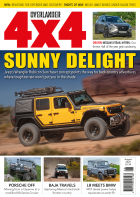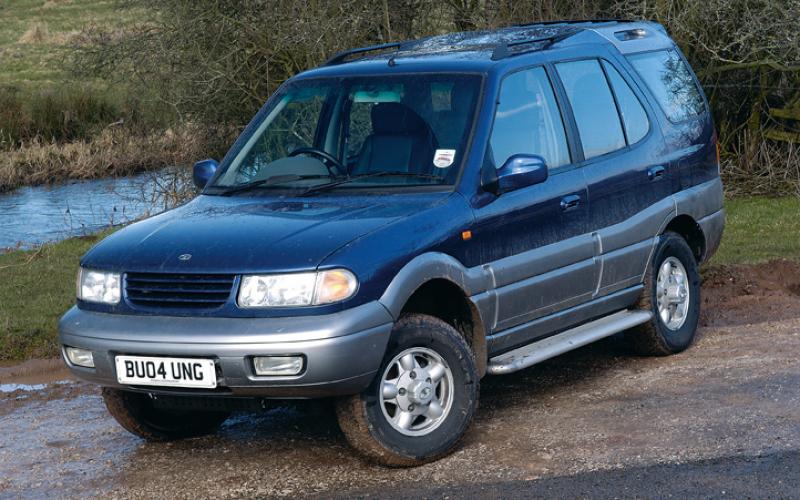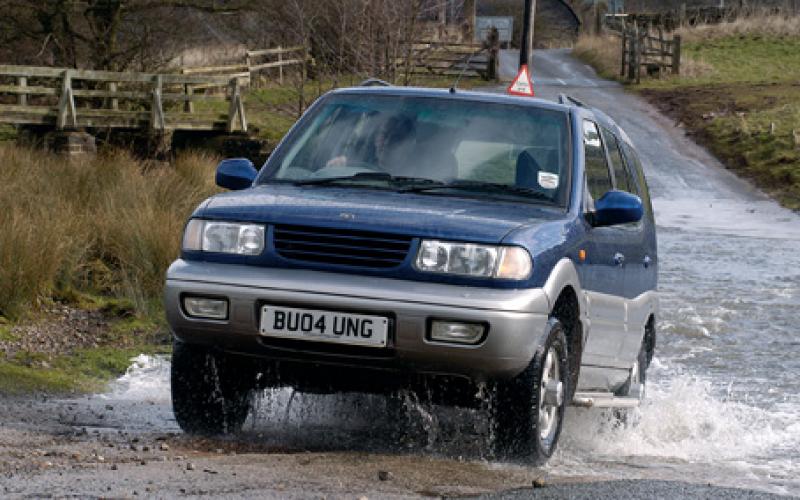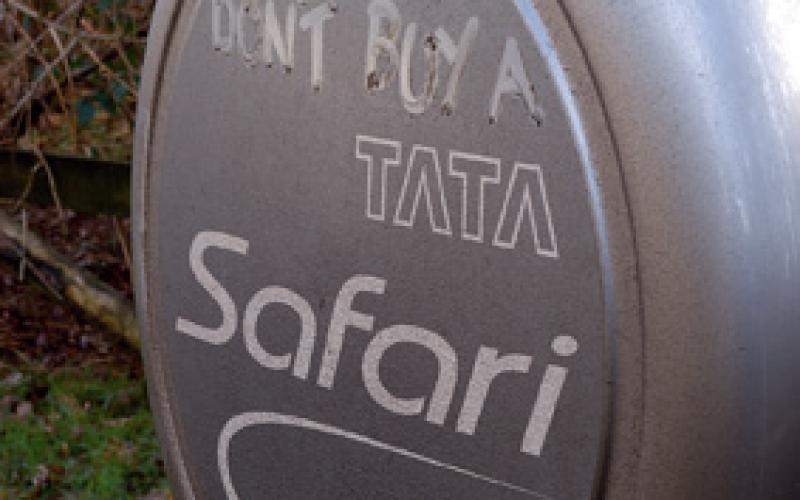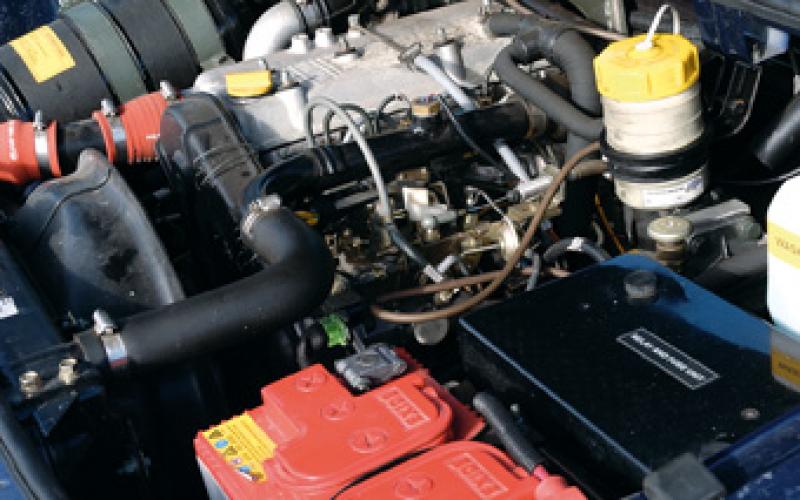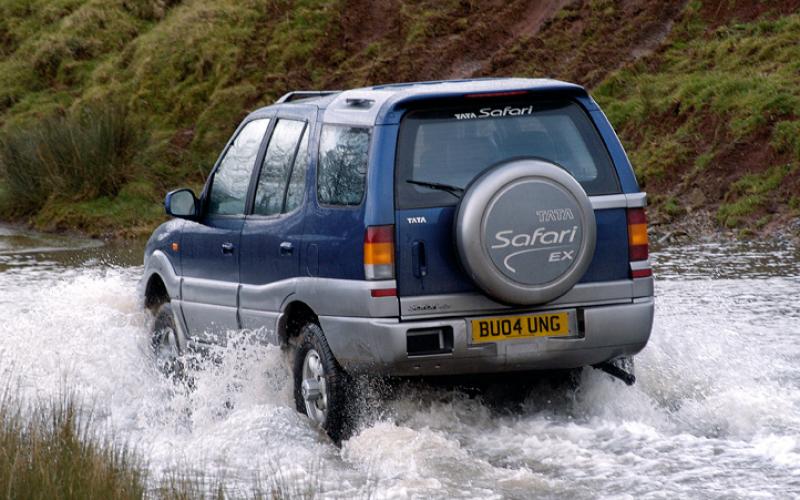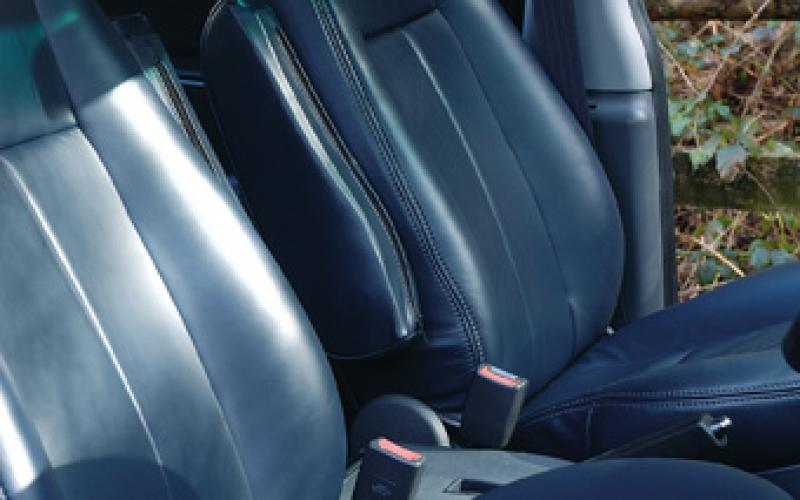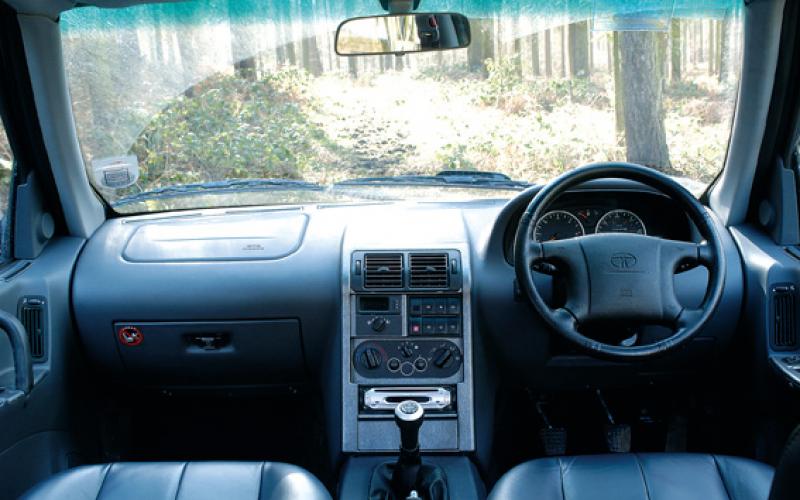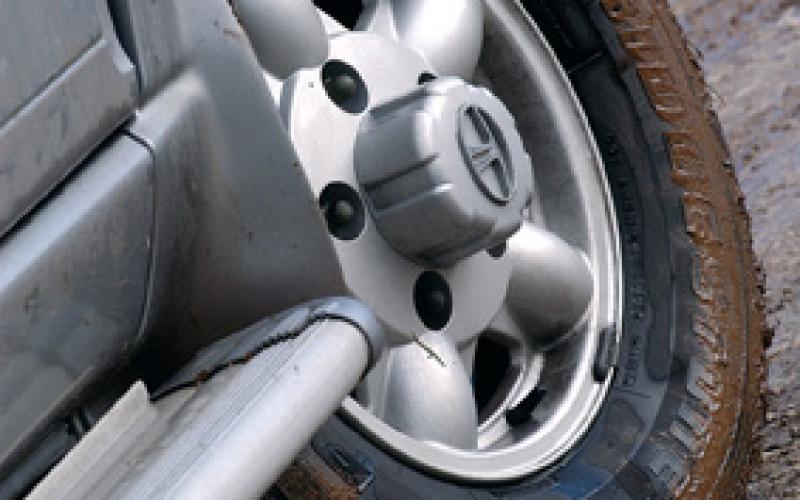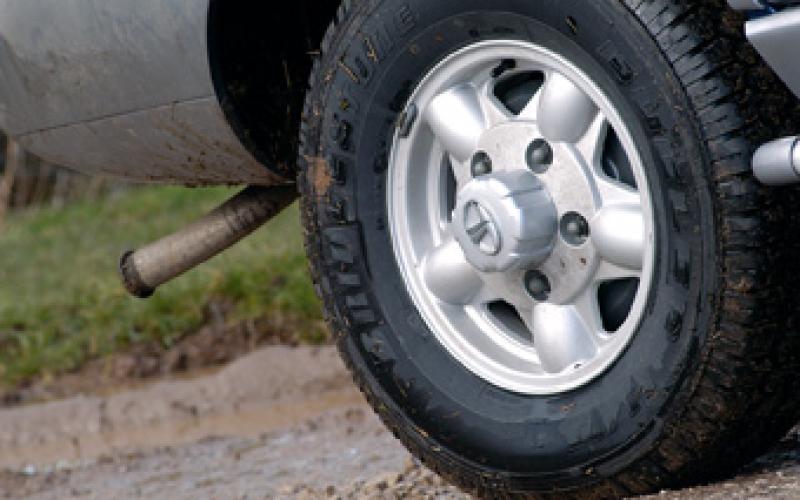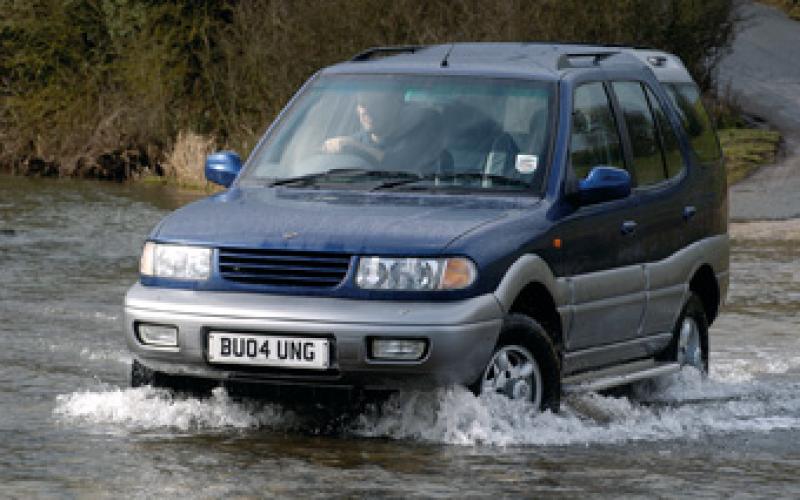Tata Safari ♦ Vehicle Test ♦
Under no circumstances should the Tata Safari EX be bought.
Something I’ve said on many occasions when discussing 4x4s with people is that there aren’t any bad cars anymore, just dishonest ones. What I mean by this is that, for example, the Land Rover 90 is a fine off-roader – but Solihull’s attempts to position it as an everyday car might be seen as more than a little misleading.
That was until I spent a week with the Tata Safari EX. Because this is not going to be a road test report in the conventional sense: it’s going to be a list of reasons why you must never, on any account, buy one. We all know about the motoring hacks who for a long time slagged off everything from Korea because they eat dogs there. I could tell you about a few people in this game who still have a downer on German cars because of two wars and a bunch of football matches, too.
So, let me just say that none of this is about the Tata’s home country. India has given the world one of its foremost religions, a rich diversity of regional cultures and a national cuisine without equal, and despite what everyone assumes it’s a sophisticated, highly developed industrial nation whose economy makes it a true global leader.
So, let’s be clear. The Safari’s sin is not that it’s Indian. It’s that it’s crap. Where will I start? It looks ancient, with cruddy styling and alloys that look like they were sourced at Honest Eric’s Rubbish Alloys Shack. Tata compares it to the Discovery in terms of size; whether its styling was contrived as a deliberate copy of Solihull’s favourite is open to debate, but the similarities are clear… though it looks older than the first Disco does, even now.
Stick the key in the door (no remote locking here), and you gain access to an interior which is, if anything, even more dated. The EX boasts leather seats, and that’s exactly what it’s got. And a Big Mac is made of 100% pure beef. Yes, it’s leather, but the vinyl seats in a base-spec Defender look and feel classier.
At least that way they’re not out of keeping with the rest of the interior. The dashboard is a sea of harsh, cheap-looking plastic, with a truly extraordinary metallic-effect surround to the centre binnacle. Switchgear is prehistoric – and that’s not classic car prehistoric, but rubbish old banger prehistoric.
The driver’s seat has a lumbar support, the handle for which I couldn’t actually move at all except by getting out of the car and heaving at it. Adjusting the steering column is similarly troublesome – it doesn’t move much, but you can’t half bark your fingers in the process.
Among the other highlights is the position of the stereo, right in front of the gearstick where you can least afford to be putting your eyes while driving. This is especially hazardous during the period before you give up trying to get any AM stations on it, though at least the sound quality is OK (it needs to be, to drown out the cacophony of squeaks and rattles from the trim and the rhythmic booming from the engine at motorway speeds).
But my favourite examples of Tata’s avant-garde approach to the concept of the driving environment are a couple of details which should really be of no significance. Still, the devil is in the detail, they say, and in this case they’re almost literally right. Many cars have a beeper that sounds when you put the key in the ignition or leave the headlamps on – the Safari makes the most peculiar electronic tweet, like a bat with asthma or something. It’s hard to know whether to laugh or cry.
At least you know what to do about the sticker in the vehicle which tells you about the operation of its four-wheel drive functions. Rip it off, that’s what – at least, it looked as if several efforts had been made to remove it in the past.
Why would someone want to do such a thing? Because the imbecile who stuck it to the windscreen put it right in front of the driver’s seat, that’s why, and it obscures about the top 25% of your forward vision. If you’re really tall, it’ll get right in the way. I’m just over six foot, and I found myself craning to see under it when driving into dips in the road.
Next to this kind of lunacy, a bank of flimsy, antediluvian switches for things like the rear wiper is just averagely bad. Mind you, one of them is for releasing the fuel filler – and after operating it, I still needed to prise the flap open with the ignition key. At least the electronic four-wheel-drive selector worked as it should, though it takes forever for low box to engage.
But that’s nothing compared to the time it takes for the glow plugs to pre-heat when you switch on the ignition. Even when the engine’s already been run up to full temperature, it takes longer than anything else I can think of on the market today before the coil light goes out.
Once you finally get to turn the key, the whole vehicle shakes as the spectacularly poor 2.0-litre turbodiesel engine shudders into life. When we say ‘2.0-litre,’ by the way, that’s because it’s what Tata calls it. Given that it displaces a mere 1948cc, however, this appears to be an example of another kind of dishonest 4x4.
Anyway, trying to pull away is a test of skill with the clutch, as the whole plot starts coughing towards a stall if you try and do it like you would in any other vehicle. That’s assuming you’ve managed to select a gear, though, as the box is baulky and unwilling until you get it warmed up.
People don’t buy Tatas because they want to go fast (at least, not unless they’re seriously unwell), but even by the relaxed standards of the average diesel-engined 4x4 the Safari is ponderous to the point of hilarity. You have to give it absolute screaming death in every gear to get any sort of acceleration at all, and even then the quoted 0-60 time seems optimistic. And it’s nineteen seconds. Overtaking requires either a vast stretch of straight road, intimate knowledge of what’s around the next corner or a healthy disregard for your own personal safety. Having said that, if you’ve gone and bought one of these things you probably don’t care any more whether you live or die, so that’s alright.
Equally unnerving is the vehicle’s performance in corners, where you never quite know how little you’re going to get in the way of turn-in. You know it’s going to be bad, you’re just never sure quite how bad. Several times in our week with the vehicle, it lightened up alarmingly at the front under braking into corners – one of the reasons why, although I did manage to out-drag a quarry truck on a really long straight (albeit with a lot of effort), prior to that it had actually been pulling away from me through corners.
Chassis engineers are forever looking for the perfect balance between ride and handling; despite having independent front suspension, the Safari has precious little of either, slopping around in corners like an over-sprung, under-damped dead weight on wheels. Potholes make it bounce from side to side, uneven roads make it pitch like a ferry in a storm and everyday road damage sends crunching shudders up your spine. Somehow, they’ve managed to package together the worst features of hard and soft suspension settings, without achieving any of the virtues of either. It’s not even very flexible off-road.
Yes, off-road. The saving grace of many a rubbish 4x4 is that they’re handy in the rough, but its independent front end means the Safari is vulnerable to ruts and unbalanced over severe terrain. With a decent set of tyres, it’ll get you plenty of places, but you’ll probably damage it in the process. A completely preposterous set of low-slung side steps sees to that, and the exhaust pipe hangs so far down below the back bumper, it’s only a matter of time before you fetch it off on a kindly positioned piece of planet Earth. The engine’s laughable power output means that even in low box, you need to fight against a tendency to go off the boil – it’s a lot of effort for very little reward.
On the subject of things that take a lot of effort, get ready for a battle if you’ve got a bulky load to put in the back. The second row of seats has a split-fold facility, though it doesn’t leave an even vaguely flat floor, and behind them is a pair of jump seats (appropriately named, because you’ll want to), so load length isn’t a problem. But oh, the back door. It’s side-hinged on the right, so at least it opens away from the kerb, but it’s on a gas strut that doesn’t actually hold it open. In fact, it almost does the opposite, pulling it halfway shut again. You just have to gape open-mouthed at such genius.
Still, at least the Safari will hold its value in a vice-like grip, won’t it? You know, the way all 4x4s do? Well, how much do you think your £14,995 of new Safari will still be worth when the time comes to enjoy the blessed release of replacing it with something else? Suffice it to say that not everyone is going to be gung-ho to make the same mistake as you did…
If you want to know how quickly a car depreciates, a good way to do it is to check out the data published in What Car? magazine. No, no, no, you buy it as well as Total Off Road, not instead of… Anyway, these suggest that a fully serviced Safari with average miles and in good condition will retain 37% of its new value after three years. And that’s bad.
As an experiment, we phoned a range of dealers asking what they’d give us for the vehicle tested here as a trade-in against a new 4x4. The results are shown in the table on the previous pages: rather than the £5550-ish What Car? estimates it’ll be worth after three years of hellish motoring, our one-year-old, ultra-low-mileage example was bid between £4000 and £8500. Even a Tata dealer only offered about 50% of its new price against another Safari.
One of the dealers actually didn’t know what a Safari was, so he phoned round various Tata agents to ask them what it was worth. ‘They all said it’s not worth much,’ he told us when he called back. ‘Because it’s crap.’
So, is there anything at all to recommend this vehicle? Er, no, actually. The only good thing about the Safari is that, by diesel standards, the cabin heater warms up pretty quickly. That apart, it’s just plain bad. And, as architecture critic Dejan Sudic once said about Croydon, it’s not even interestingly bad.
That’s quite a good analogy, actually. The Safari is the automotive equivalent of Croydon. Behind its status as a music hall joke is the underlying truth of its absolute mediocrity. Just as Croydon is an urban statement of all that is squalid and tawdry, a place in which many businesses have located because they have no self-respect and regard their employees as a burden, the Safari is a 4x4 you buy because you understand nothing about quality and don’t care how your peers perceive you.
Regular readers will appreciate that TOR doesn’t normally go in for this kind of vitriolic hatchet job. If we did, it would soon come to mean nothing (what’s known in the trade as The Clarkson Effect). I believe in balanced criticism. But the thing is, all of the above is balanced criticism. You can forgive a 4x4 for being kind of old-school on the road if it has the robust design and elegant simplicity that makes it a winner off-road and a champion in front of a trailer – think Nissan Patrol, Land Rover Defender (once), even the good old Lada Niva – but the Safari doesn’t even have that defence. It’s mediocre off-road and shocking on-road, and what it would be like in front of the quoted maximum trailer weight of 2000kg (itself pathetically small for a vehicle of this type) just doesn’t bear thinking about.
If you’ve bought a Safari and you’ve somehow managed to read this far without breaking down in tears, let me say I feel sorry for you. You’ve fallen for it, and now you’re finding out the hard way just what an awful mistake you made. Either that or you actually like the thing, in which case your judgement is so bad, I fear for the consequences it will have through every other aspect of your life. Either way, your vehicle has already depreciated so much you’re likely to be stuck with it for a long, long time.
Poshing-up a basic truck is an ever-popular sales trick for vehicle manufacturers, and it’s one that’s brought us some memorable 4x4s. But it only works if you’re starting with something worth having in the first place. Think Land Cruiser VX, Patrol SVE, L200 Warrior… it works, but you need a solid foundation.
The Safari is a solid foundation for, well, nothing. It’s just a horrible, horrible thing, and under no circumstances should you ever buy one. It fails to deliver on any of its promises, implicit or explicit. And in EX form, it simply confirms that age-old adage: you can’t polish a turd. Especially not when what you’re trying to polish it with is another turd.
Verdict
Don't
+ Nothing
- Everything



